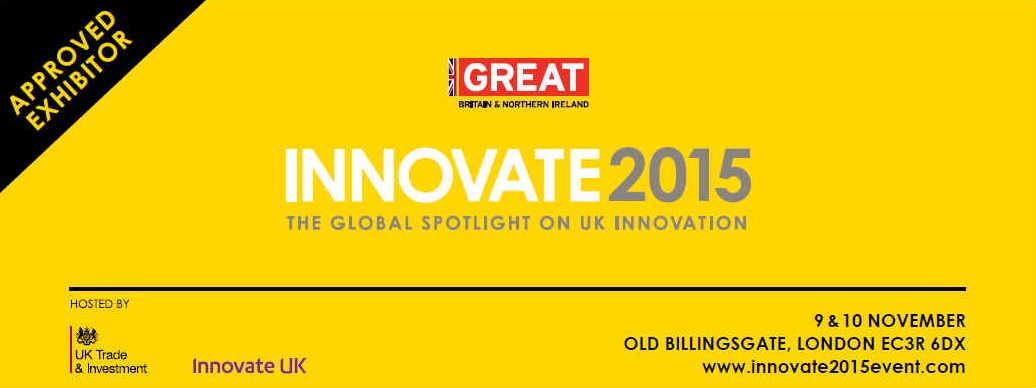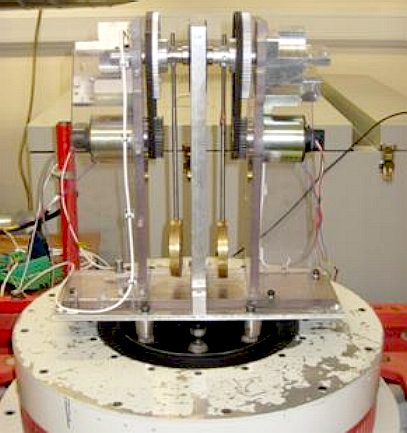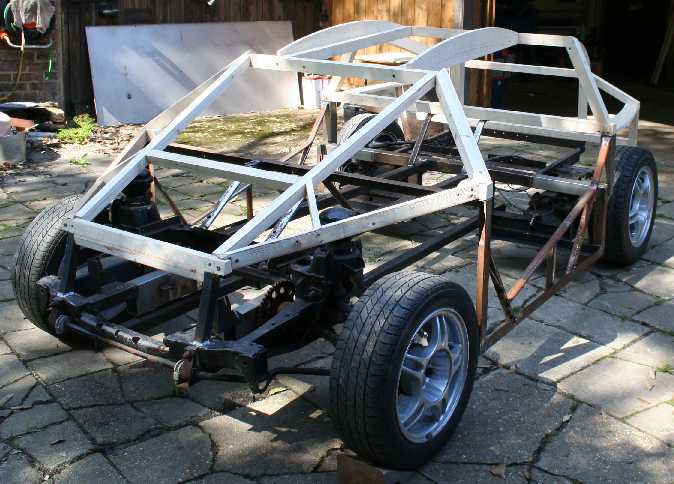|
TSB - Technology Strategy Board
|
|
|
Frank Whittle captained the modern jet (gas turbine) engine, which the UK handed on a plate to the US during WW2. The TSB is an organisation that is trying to keep as many inventions such as this here in the UK, without contributing significantly to patent fees. That of course means handing UK inventions to other countries who then only need to read a published UK patent specification, then replicate the art in their country where no patent has been filed for lack of financial support. Talk about catch 22. The patent system does not favour lone inventors. It is expensive and complicated. Copyright for artists is free. We believe that patents should be fee free and that in the case of hi-tec developments, patents should last for at least 50 years.
The Technology Strategy Board has now been re-branded as InnovateUK. The rules of funding though are still very much the same - so don't get too excited. ABOUT THE TSB
According to their blurb, the TSB exist to identify and stimulate key technology innovation by offering part funding, if you'll share your idea with the big boys, which they see as profitable for the UK's corporations - who might then absorb fresh talent at virtually no cost in IP terms.
In our experience the TSB routinely fail to identify innovation that in the long-term will affect the earning ability of UK plc. This is reflected in the current National Debt of £1.33 trillion pounds - and rising. That being the case the current agenda is irresponsible in economic terms. It appears to us from their track record (including that of their predecessors) that they have consistently given away the technology lead to overseas competitors by failing to recognise key new innovation - or, by being unwilling to support disruptive technology.
The world faces major challenges – whether climate change, resource use or ageing populations - which are creating global market opportunities for new solutions. The companies and countries which can adapt most rapidly are likely to gain the most benefit, especially if they have IP rights to trade internationally.
To accelerate economic growth, the TSB use the promise of funding to extract ideas from innovators which can then be shared among manufacturers. In their own words:
"We spot opportunities, help business connect with knowledge ...."
If you have a business with the potential for high growth driven by technology-enabled innovation, you might find help here. Be careful though not to give away your ideas, for once the TSB has seen them, for practical purposes they are in the melting pot for all the large companies that have been servicing the UK's military needs in past decades - but more importantly, the lack of support for IP protection is just short of commercial suicide.
Nothing really changes. Patent
fees are not eligible expenses in the round, which ensures that applicants are not
covered and are unlikely to own the IP they are feeding into the
cauldron - so have little control over buy outs/sell outs.
1. Aerospace 2. Road 3. Marine and 4. Rail
The UK has been lagging behind for years and giving away technological advances where innovators are unable to obtain regular commercial funding, simply because UK Banks do not recognize innovation as an acceptable commercial risk, unlike other European states. This is unlikely to change. Innovators with radical solutions may as well stay home and save their time and effort.
SEAVAX - This is a concept that was refused funding by the TSB in 2013. The Technology Strategy Board's (then) assessors said that the technology was not new. What this tells us is that agencies that are looking to promote innovation need to understand what the problems are that the UK is trying to come to terms with - especially when new technology such as the above vessel could offer so much to every country that depends on fish in their economy - hence clean, or rather, healthy oceans. Just so that today's assessors get it: "new" means something that has not been done before. "Beneficial" means that a product or system is potentially useful to the human race.
Just imagine how much more advanced this concept would have been if funding had been made available in 2013. The vessel you are looking at above has been built on a trickle budget, beginning in January of 2015 with input on a voluntary basis. Development capital for a full size prototype is more likely to come from fund raising events such as Miss Ocean, than any retroactive organization doling out government assistance - and that includes the European Horizon 2020 initiatives that also favour big business over social advancement.
VESSEL EFFICIENCY COMPETITION 2013
The Technology Strategy Board has awarded Plymouth-based WITT Energy $190,000 to develop a device designed to generate renewable energy from wave motion in the marine environment.
The Whatever Input to Torsion Transfer (WITT) transmission system is capable of collecting energy from chaotic movement in any direction and convert it to useable power. The system is basically a gimbaled pendulum where a ships rolling and pitching motion causes a heavy pendulum to seek the vertical, in so doing ratcheting a geared mechanism to generate electricity.
The funding was awarded under the Technology Strategy Board's first Vessel Efficiency competition that opened at the start of 2013. WITT Energy entered following successful testing of their device in the Wave Tank at Plymouth University and in Plymouth Sound.
The
TSB kicked in £190,000 to help develop the concept on the left. On the
right is a counter-trading (balanced) pendulum based generator from the
University of Aberdeen, using rotational motion of the parametric pendulum mounted on a floating structure and excited by the waves to extract the energy from the sea.
Energy Harvesting Technology from Vessel Motion
The system has potential applications in the marine environment - sea, river or tidal - from lighting navigational buoys to GPS systems and the charging of boats when moored. From this point of view it is difficult to see how this improves vessel efficiency significantly, where zero carbon harvesting as a prime mover was refused funding by the TSB, they also declining to view a patent specification to be able to evaluate the technology.
The WITT system could be applied to use on land, for example in a backpack utilising motional energy from walking or jogging and converting it into stored energy for charging appliances etc, or to illuminate pedestrians or animals in the dark. It could also be used for GPS tracking systems for endangered species.
This is of course nothing new. Pendulum "self-winding" ratchet watches have been around since the 1920s. The mechanism is basically two self-winding watch pendulums set at 90 degrees to each other. So, capturing roll and pitch. What is novel, is the claim to harvesting significant energy to increase a vessel's efficiency. It is unclear how up and down motion is captured. We wonder if a patent specification has been filed.
The makers claim that WITT is capable of using all six degrees of motion, clockwise, anti-clockwise, up and down and back and forth at any speed to turn a flywheel to create electricity. The system is the brainchild of civil engineer Martin Wickett, building the first device in his workshop in 2009 from off-the-shelf components.
Witt Energy Limited was the first commercial customer to use Plymouth University’s
Wave Tank to test the device in simulated conditions, including a river flow.
The next pre production WITT will be able to have up to 25 kilos in weight as an energy collecting transmission system, using standard
components. The task is to ensure the WITT is a 'fit and forget' solution suited to the
demanding marine environment.
Applications in many different environments
The marine industry could use the technology for charging batteries on boats (even when moored up), aqua-culture, oceanography, data gathering buoys, novelty and safety lighting, or collecting power for auto naught boats.
Mairi said, “We knew the technology worked and that it would have applications in many different environments, but we needed help to get in front of the right people. “As the Witt is a completely enclosed device and none of the parts are exposed to the elements, it can be used in even the harshest of environments, the WITT sealed unit will collect energy from sea, river and tidal locations, so it is perfect for aquaculture and oceanography and industries like navigational lighting who have major maintenance costs sending out boats in harsh conditions to clean solar panels and to change batteries ........"
WITT win $100,000 Gulfstream Navigator Award
WITT Energy Ltd again successfully entered its energy harvesting technology for the Gulfstream Navigator Award from Ocean Exchange, an organisation that claims to be "the intersection where organizations from around the world advance and promote their cutting edge solutions and innovations in materials, devices, processes, and systems.".
The Gulfstream Navigator Award is given to the solution that demonstrates the greatest potential to address the Ocean Exchange's theme with applicability across multiple industries generating positive impact on economies and the environment.
All At Sea II - Future Maritime Science & Technology Opportunities
The
second half of the "All At Sea" briefing event was devoted to
Horizon 2020, a serious funding programme operated by the EU to
accelerate technology and priority research topics.
CONTACTS
For all general enquiries about the work of the Technology Strategy Board, please telephone: 01793 442700 or email: support@innovateuk.org
The Technology Strategy Board
Companies and other organisations seeking further information about Technology Strategy Board funding opportunities should visit the Competitions page of the Technology Strategy Board website, email support@innovateuk.org or phone the Competitions Helpline on 0300 321 4357.
FUTURE
PROOFED TECHNOLOGY - Without
financial support to kickstart disruptive technology projects (and
create jobs), startup companies such as ours, without a trading track
record or industrial allies, are forced to go it alone at a crawl. The
electric prototype city sports car above incorporates instant recharging
using a cartridge exchange system. The last thing motor manufacturers want is a
change in concept that will force a re-design of existing chassis and
re-tooling - and we cannot blame them. But that is of course the
resistance to change that innovation must overcome. The only way to
introduce such a vehicle to market without backing is via the kit-car
market or crowd funding. That may generate sufficient cashflow in time to allow BMS
to invest in a prototype service
station for the universal
energy cartridge of the future.
LINKS
http://www.science.mod.uk/Engagement/the_portal.aspx http://www.science.mod.uk/Engagement/enterprise.aspx https://www.dstl.gov.uk/centrefordefenceenterprise https://www.dstl.gov.uk US Department of Navy Research, development & Acquisition - http://acquisition.navy.mil/ US Fleet Forces Command - http://www.cffc.navy.mil/ US http://www.msc.navy.mil/ http://en.wikipedia.org/wiki/Naval_Oceanographic_Office http://www.maritimejournal.com/news101/industry-news/ukho-appoints-new-national-hydrographer http://en.wikipedia.org/wiki/United_Kingdom_Hydrographic_Office http://www.ths.org.uk http://www.spri.cam.ac.uk/friends/committee/ http://www.thefutureofnavigation.com/ten_steps.aspx http://www.quaynote.com/ankiti/www/?code=ecdis13&f=programme Wiki United_Kingdom_Hydrographic_Office https://www.dstl.gov.uk/insight http://www.innovate2014.co.uk/
ZEV - The Bluefish ZCC (Zero Carbon Cruiser) platform promises truly emission free transport on our oceans. The ZCC concept is based on a stable SWASH hull. The company is looking for EU collaborative partners for the Horizon 2020 call. The ship may be robotic for autonomous operation at relatively high speed in the 7-10 knot range - 24/7 and 365 days a year. This is only thought to be possible with the revolutionary energy harvesting system. Apart from being super efficient, the hullform is ideal for automatic release and recovery of ROVs or towed arrays. This vessel pays for itself in diesel fuel saved every ten years.
|
|
|
This
website is Copyright © 2015 Bluebird Marine Systems
Ltd. The
names Bluebird™,
Bluefish™,
Miss Ocean™, SeaVax™ and the blue bird in flight
|






